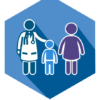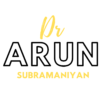
Introduction
- Uses of screening
- Types of screening
- 1 Mass Screening
- 2 Selective or High-risk screening
- 3 Multiphasic Screening
- Criteria for screening- 2 Consideration
- 1 Criterion for disease
- 9 criteria
- 2 Criteria for Screening test
- 1 Acceptability
- 2 Repeatability (Reliability, Precision, Reproducibility)
- Observational variation
- Intra Observer Variation ( Within)
- Interobserver Variation ( Between)
- Biological Variation
- Parameter observed
- Symptoms and answers
- Regression to mean
- Errors relating to technical methods
- Observational variation
- 3 Validity (Accuracy)
- Sensitivity (True Positive)
- Specificity ( True Negative)
- Positive predictive value
- Negative Predictive Value
- False Positive
- False Negative
- 1 Criterion for disease
- National Vector Borne Disease Control Programme
- Malaria
- Lymphatic Filariasis
- Kala Azar
- Japanese Encephalitis
- Dengue
- Chicken gunya fever
- National Leprsoy “Eradication” Programme
- Revised National Tuberculosis Control Programme
- National Aids Control Programme
- National Programme for Control of Blindness
- Iodine Deficiency Disorders Programme
- Universal Immunization Programme
- National Health Mission
- National Urban Health Mission
- National Rural Health Mission
- Reproductive and Child health programme
- Janani Suraksha Yojana
- Reproductive, Maternal, Newborn, Child and Adolescent Health Strategy2013
- Indian Newborn Action Plan
- National Programme for Prevention and Control of Cancer, Diabetes, Cardiovascular Diseases and Stroke
- National Mental Health Programme
- Interacted Disease Surveillance Project
- National Gunieaworm eradication programme
- Yaws Eradication Programme
- National Programme For Control and Treatment of Occupatioanal Diseases
- Nutritional Programme
- National Programme for Control and Treatment of Occupational Diseases
- Nutritional Programme
- National Family Welfare Programme
- National Water Supply and Sanitation Programme
- Minimum Needs Programme
- 20 point programme
Methods
- 1 Spacing Methods
- 1 Barrier Methods
Physical
- 1 Condom
- 2 Diaphragm
- 3 Vaginal Sponge
- Chemical
- 1 Foam – Foam tablets and aerosols
- 2 Creams, Jellies, and Pastes
- 3 Suppositories- Has to be inserted manually
- 4 Soluble Films – C films that have to be inserted manually
Combined
- 2 Intrauterine Devices
- 1st Generation
- 2nd Generation- Copper releasing
- 3 Hormonal Methods
- Oral Methods
- 1 Combined Pills ( Original Pills)
- 2 Progesterone Only Pills (POP) ( Mini pill or Micro pill)
- 3 Post Coital Contraception (Morning after)
- 4 Once a month pills
- 5 Male Pills
- Depot Formulation
- Injectables
- Progesterone Only Injectables
- DMPA
- DMPA S-C
- NET – EN
- Combined Injectables
- Progesterone Only Injectables
- Subdermal Implants
- NORPLAN
- Vaginal Rings
- Injectables
- Oral Methods
- 4 Post Conceptional Methods ( Termination of Pregnancy)
- Menstrual Regulation
- Menstrual Induction
- Oral Abortificant
- Definition of Abortion
- 5 Miscellaneous
- 1 Abstinence
- 2 Coitus interuptus
- 3 Safe Period ( Rhythm Period or Calendar method)
- 4 Natural family Planning method
- 5 Breast Feeding
- 6 Birth Control Vaccine
- Vaccine prepared from
- Beta subunits of HCG
- Antibodies against pregnancy
- Vaccine prepared from
- 1 Barrier Methods
- 2 Terminal Methods
- 1 Male Sterilization
- 2 Female Sterilization
- 1 Spacing Methods
Classification Of Food
- By Origin
- Chemical Composition
- Predominant function
- Nutritive value
Nutrients
- Macronutrients
- Micronutrients
- Dietary Antioxidants
Nutritional Profile of Principle flood
- 1 Cereal and Millets
- 2 Pulses( Legumes)
- 3 Vegetables
- 4 Nuts and oilseeds
- 5 Fruits
- 6 Animal Foods
Nutritional Requirements
Reference Body weights
Energy
- Sources of energy
Balanced Diet
- Dietary goals
Nutritional Problems In public health
- 1 Low birth weight
- 2 Undernutrition
- 3 Xeropthalmia
- 4 Nutritional Anemia
- 5 Iodine Deficiency Disorders
- 6 Endemic Fluorosis (Q)
- 7 Lathryrism
Nutritional Factors in Selected Diseases
- 1 Cardiovascular disease
- 2 Diabetes
- 3 Obesity
- 4 Cancer
Assessment of Nutritional Status
- Assessment methods
- 1 Clinical Examination
- 2 Anthropometry
- 3 Biochemical evaluation
- 4 Functional Assessment
- 5 Assessment of Dietary Intake
- 6 Vital and health statistics
- 7 Ecological studies
- Assessment methods
Nutritional Surveillance
Social Aspects of nutrition
Food Surveillance
- Food Hygiene
- Sanitation of eating places
- Food Handlers
- Food Borne Diseases
- Food Toxicants
- Food Additives(Q)
- Food Fortification (Q)
- Adulteration of Foods
- Food Standards
- National Nutritional Policy 1993
Community Nutritional Programmes
- 1 Vitamin A Prophylaxis Programme
- 2 Prophylaxis against Nutritional anemia
- 3 Control of Iodine Deficiency disorders
- 4 Special Nutritional Programmes
- 5 Balwadi nutrition programs
- 6 ICDS program
- 7 Mid-day meal program (Q)
- 8 Mid-day meal scheme
- Water
- Safe and Wholesome water
- Water Requirement
- Sources of water supply
- Water Pollution
- Water Related Diseases
- Purification of Water
- Water Quality – Criteria and Standards
- Surveillance Of Drinking water quality
- Hardness of Water (Q)
- Distribution of water
- Swimming pool sanitation
- Sanitation measures
- National Water Supply and Sanitaion programme
- Health education
- Air
- Introduction
- Composition
- Discomfort
- Comfort zones
- Air Pollution
- Basic Defintions
- Sources of air pollution
- Meterological factors
- Air Pollutants
- Indoor air pollution
- Monitoring air pollution
- Effects of air pollution
- Prevention and control of air pollution
- Disinfection of air
- Introduction
- Ventialtion
- Standards of Ventilation
- Types of Ventilation
- Light
- Requirements of Good Lighting
- Measurement of Light
- Natural lighting
- Measurement of Daylight
- Artificial lighting
- Methods of Artificial illumination
- Lighting standards
- Biological effects of light
- Noise
- Sources
- Properties
- Effects of noise exposure
- Contol of noise
- Radiation
- Sources of radiation exposure
- Types of radition
- Radition units
- Biological effects of radition
- Radiation protection
- Meterological environment
- 1 Atmosphoric pressure
- 2 Air temperature
- 3 Humidity
- 4 Precipitation
- 5 Air Velocity
- 6 Wind Direction
- 7 Clouds and weather observation
- Housing
- Social goals of housing
- Housing standards
- Rural housing
- Housing and Health
- Overcrowding
- Indicators of housing
- Public policy
- Disposal of wastes
- Solid Wastes
- Excreta disposal
- Arthropods
- Classes
- Distinctive characters
- Arthropod( Vector) borne diseases ( 1(4) Mosquito, 4 Fly, 1 Flea, 1 Louse, 1 Bug, 2 Tick, 2 Mite, 1 Cyclops, 1 Cockroach)
1 Mosquito
- 1 Anopheles
- Malaria
- Filaria( Not in India)
- 2 Culex
- West Nile Fever
- Viral Arthritis
- Japanese Encephalitis
- Bancroftian Filariasis
- 3 Aedes
- Dengue
- Dengue Haemorrhagic Fever
- Chickungunya
- Yellow Fever( Not in India)
- Filaria( Not in India)
- 4 Mansonoides
- Chikungunya Fever
- Malayan Filariasis
- 1 Anopheles
2 Housefly
- Anthrax
- Poliomyelitis
- Diarrhea
- Dysentry
- Yaws
- Trachoma
3 Sand fly
- Kala Azar ( Visceral Leishmaniasis)
- Oreintal Sore( Cutaneous Leishmaniasis)
4 Tse tse Fly
- Sleeping Sickness
5 Blackfly
Onchocerciasis
6 Rat flea
- Bubonic Plaque
- Endemic Typhus
7 Louse ( Train Religious Ped in Ipad)
- Trench Fever
- Relapsing Fever
- Pediculosis
- Epidemic Typhus
8 Reduviid Bug
- Chagas Disease
9 Hard Tick
- Rocky Mountain Fever ( Tick Typhus)
- Kyasanur Forest Disease
- Viral encephalitis
- Tick Paralysis
10 Soft Tick (Sofia Queen)
- Q fever
- Relapsing Fever
11 Trombiculid mite
- Scrub Typhus
- Rickettsial pox
12 Itch Mite
- Scabies
13 Cyclops
- Guinea Worm Disease ( Dracunculiasis)
- Fish tapeworm
14 Cockroaches
- Enteric Pathogens
- Transmission of arthrod borne diseases
- Direct contact
- Mechanical
- Biological
- Priniciples of arthropod control
- Environmental control
- Chemical control
- Biological Control
- Genetic control
- Integrated approach
- Mosquito
- General Description
- Life history
- Anopheles
- Culex
- Aedes
- Mansonia
- Habitat of mosquitoes
- Mosquito borne diseses
- Mosquito control measures
- 1 Antilarval measures
- Environmental control
- Chemical control
- Biological control
- 2 Anti adult measures
- Residual sprays
- Space Sprays
- Genetic control
- 3 Protection against mosquito bites
- Mosquito net
- Screening
- Repellents
- 1 Antilarval measures
- Hosueflies
- Sandflies
- Tstes Flies
- Blackflies
- Lice
- Fleas
- Sand Flea
- Reduvid Bugs
- Ticks
- Mites
- Trombiculid mite
- Itch mite
- Cyclops
- Insecticide
- Types
- Insecticide resistance
- Toxicity of insecticide
- Rodents
- Zoonoses
- Control of zoonoses
Concept of Health Care
Health Systems
Levels of Health Care
Changing Concepts
Elements of Primary Health Care
Principles of Primary Health Care
Health for All
Millennium Developmental Goals
Sustainable Developmental Goals
Health Care Delivery
Health Status and Health Problems
Resources
Health care Services
Health Care Systems
- Public Sector
- Private Sector
- Indigenous system of medicine
- Voluntary health Agencies
- National Health Programmes
Primary Health Care in India
- At Village Level
- Sub centre level
- Primary Health Centre Level
- Village level
- Subcentre
- Primary health centre
- Community Health Centre
- Community Level
- Job description for Members in Health Team
- Medical Officer
- Health Worker Male and Female
- Job responsibilities of Health Assistant male and female
- Asha
- Health Insurance
- Other Agencies




